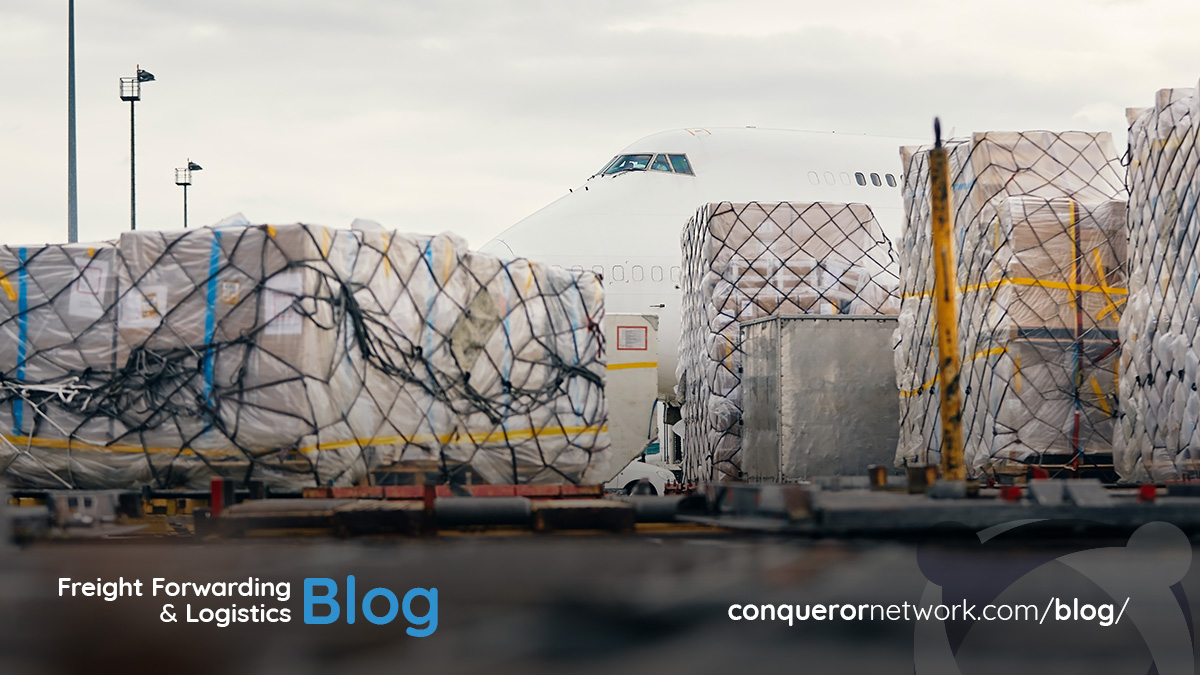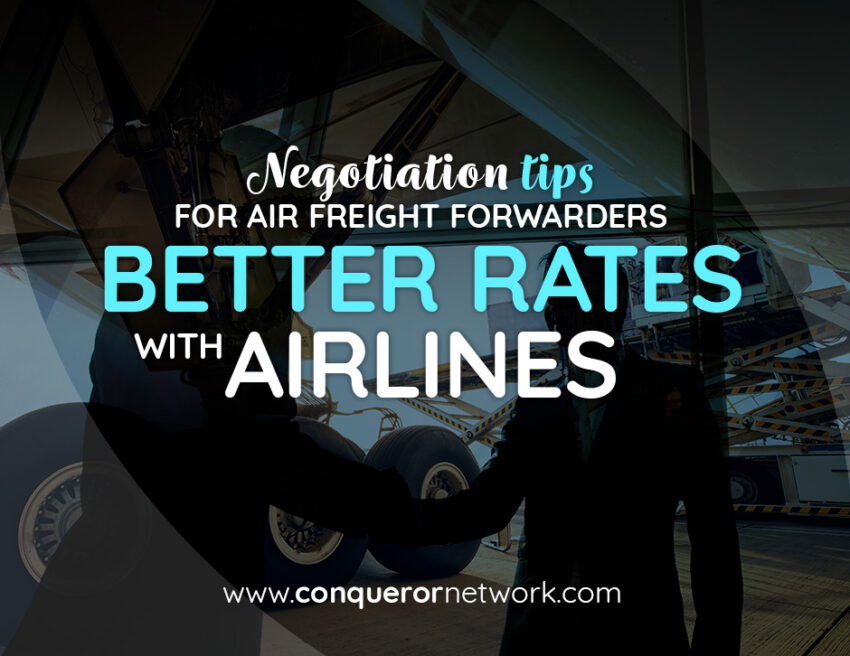Have you ever walked away from a rate negotiation with an airline wondering if you could’ve gotten a better deal? Do you feel like your competitors are securing better air freight contracts while you’re stuck with inflexible rates and limited capacity? If so, you’re not alone. In today’s hyper-competitive logistics industry, mastering the art of negotiation is one of the most important skills for air freight forwarders. With rising costs, capacity constraints, and constantly shifting market dynamics, knowing how to talk numbers with airlines is more than just useful—it’s essential.

Whether you’re a small independent freight forwarder or a larger player managing multiple international routes, getting the best possible deal requires a mix of preparation, market knowledge, timing, and trust-building. In this blog, we’ll take a closer look at how you can improve your negotiation game and secure better air freight terms from airlines.
Why Negotiation Matters More Than Ever for Air Freight Forwarders
The pandemic rewrote the rules of global cargo movement. Since then, the air cargo industry has experienced immense volatility—fluctuating fuel costs, sudden capacity shortages, and unpredictable demand patterns. For air freight forwarders, the impact has been double-edged: rates have spiked, while competition for space has become more intense.
In this environment, simply accepting the first quote offered is a risky approach. Airlines, like any other business, are willing to offer competitive rates to trusted partners who bring them consistent business or fill hard-to-sell lanes. However, if you don’t ask the right questions or present a compelling case, you might be leaving money on the table. Effective negotiation is not just about cutting costs—it’s about creating long-term relationships and strategic advantages in a crowded market.
How Air Freight Forwarders Can Prepare for Smarter Negotiations
Before you even get on the phone or send that email to the airline rep, your homework needs to be solid. Preparation is where most of the negotiation battle is won. Start by knowing your shipment volumes, preferred lanes, frequency, and transit time requirements. Airlines are more likely to offer attractive rates to forwarders who demonstrate reliable traffic, especially on routes that match their network.
It’s also critical to stay up to date with current market conditions. Are rates trending upward or downward on the lanes you use most? What’s the current fuel surcharge level? Are there any regulatory updates or geopolitical changes that might affect capacity? Being informed gives you the upper hand in conversations and shows the airline you’re not a passive player but a partner who understands the game.
Most importantly, don’t rely on one airline. Approach multiple carriers and ask for quotes—not just to compare prices but to understand how each airline views your business. You might find that a smaller or regional carrier is willing to offer more flexibility and better rates than one of the big players.
Building Relationships: A Long-Term Strategy for Air Freight Forwarders
Negotiation isn’t just about sharp tactics—it’s about trust. Airlines prefer working with freight forwarders who are reliable, communicative, and transparent. If you consistently deliver what you promise—accurate booking forecasts, timely payments, and minimal last-minute changes—airlines will start seeing you as a partner rather than just another customer.
Air freight forwarders who take the time to build these relationships often get rewarded with better rates, priority loading, and access to last-minute space. Face-to-face meetings at trade shows, logistics conferences, or even airline-sponsored events can go a long way in strengthening your negotiating position. Personal rapport can sometimes unlock concessions that a purely transactional relationship never could.
Timing Your Negotiation for Maximum Advantage
Just like in real estate or stock trading, timing is everything. Negotiating during peak season (for example, around major holidays or before the Chinese New Year) is rarely ideal unless you’re moving high-priority or urgent shipments. During off-peak seasons, airlines are more likely to be flexible and open to offering discounts to fill underutilized capacity.
It’s also worth looking into longer-term contracts. Committing to a block space agreement (BSA) for a year—especially if you have stable volumes—can get you lower rates and guaranteed space. However, this also comes with a level of risk, particularly if market conditions suddenly shift. Make sure to include flexibility clauses in case volumes dip or rates drop significantly.
Transparency and Technology: Two Negotiation Boosters
Modern negotiation isn’t just about persuasion—it’s about data. Freight forwarders who leverage technology to show detailed shipment history, volume forecasts, and performance metrics stand a better chance of convincing airlines to offer more favorable terms. Using a digital freight management system can help you present clean, verifiable data that supports your negotiation case.
Being transparent about your needs is also a winning strategy. For example, if you need special handling or time-critical delivery, communicate this upfront so the airline understands the value of the service you’re seeking. Ambiguity can often lead to misunderstandings, delays, and uncompetitive pricing. Clarity saves everyone time—and builds credibility.
What Not to Do: Common Mistakes to Avoid
Overpromising is one of the fastest ways to ruin your relationship with an airline. Don’t commit to volumes or lanes you can’t realistically deliver. It’s better to be conservative and consistent than to shoot high and fail to meet expectations.
Another common mistake is negotiating purely on price. While getting a lower rate feels like a win, it may come at the cost of service reliability. Make sure to weigh factors such as transit time, frequency, cargo cut-off times, and customer service responsiveness when choosing an airline. A good rate means nothing if your shipment gets bumped or delayed regularly.
Why Air Freight Forwarders Must Revisit Their Negotiation Strategy in 2025
With digitalization rapidly transforming the air cargo industry, airlines are becoming more data-driven in their pricing strategies. This means that freight forwarders also need to adopt a more analytical approach to negotiations. Blanket rate cards are becoming less common—dynamic pricing is now the norm, influenced by everything from fuel prices to macroeconomic indicators to capacity forecasts.
That’s why it’s time for air freight forwarders to rethink their negotiation playbook. In 2025, it’s not enough to simply ask for a discount—you need to come to the table with data, flexibility, a clear business case, and a long-term mindset. Forwarders who can do that will stand out and gain a real edge over their competition.
Final Thoughts: It’s Not Just About Price—It’s About Partnership
The air freight industry thrives on partnerships. As an air freight forwarder, your job isn’t just to move cargo—it’s to create value for your clients through reliability, efficiency, and smart cost management. Getting better rates from airlines is a big part of that. But the most successful negotiations are those that go beyond numbers and build a foundation of trust and mutual benefit.
If you want to stay competitive in 2025 and beyond, now’s the time to sharpen your negotiation skills, invest in data-backed strategies, and build meaningful relationships with airline partners. Do that, and you won’t just be negotiating better—you’ll be leading the way.


